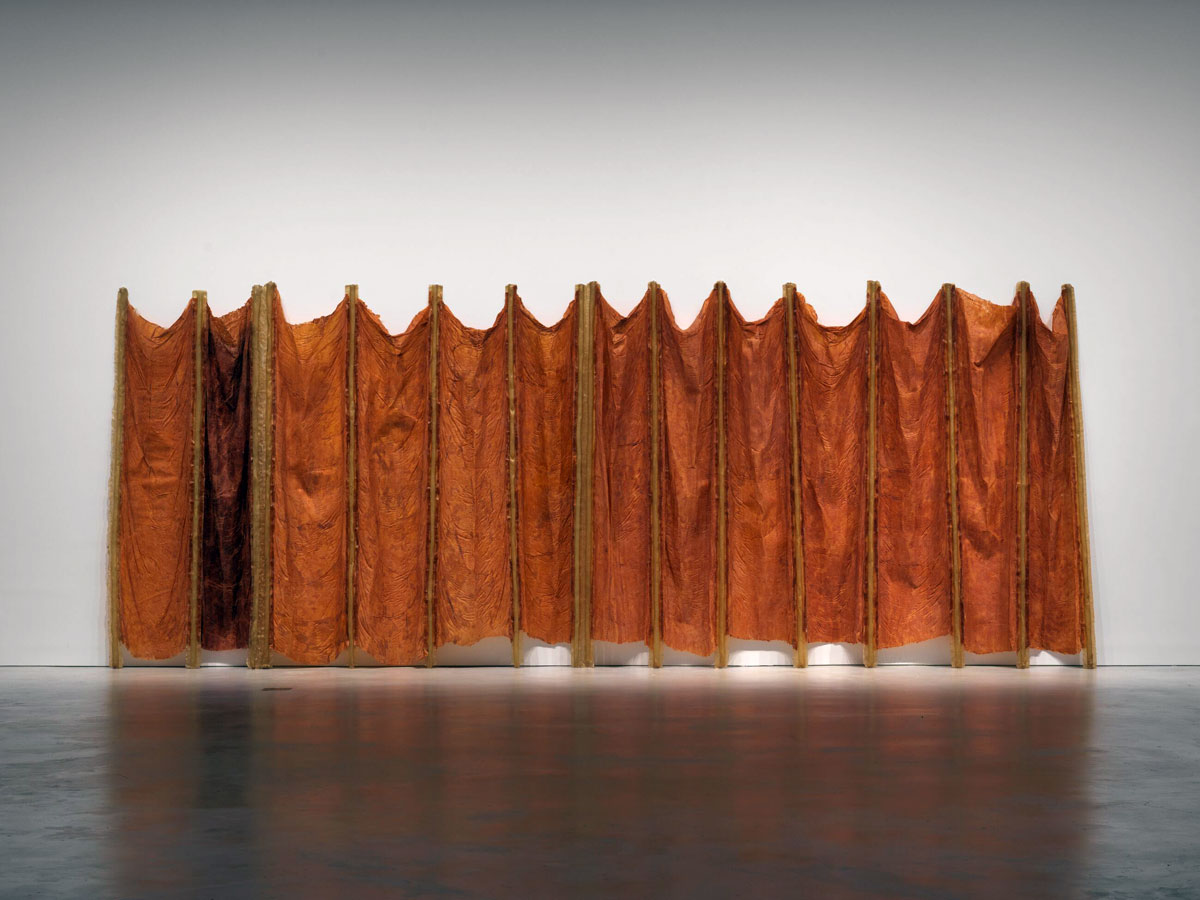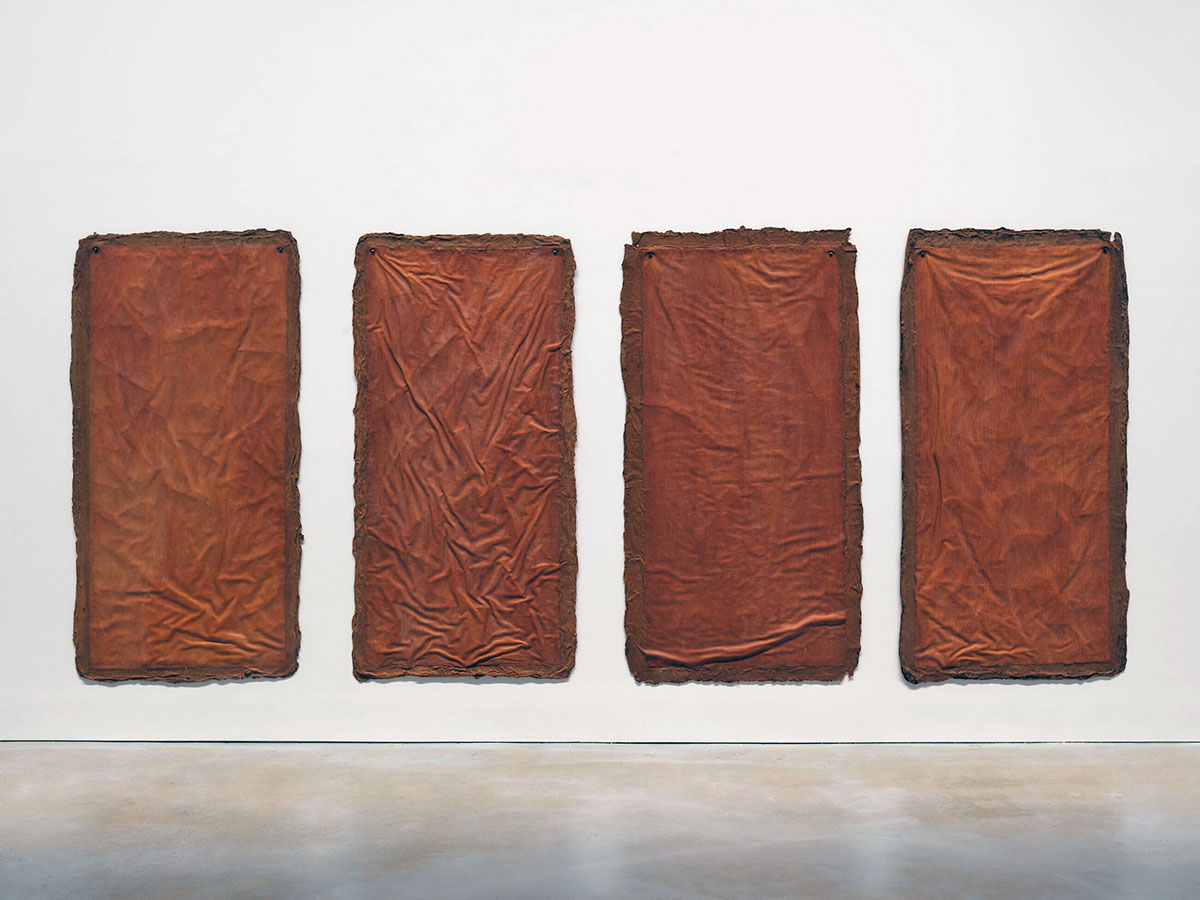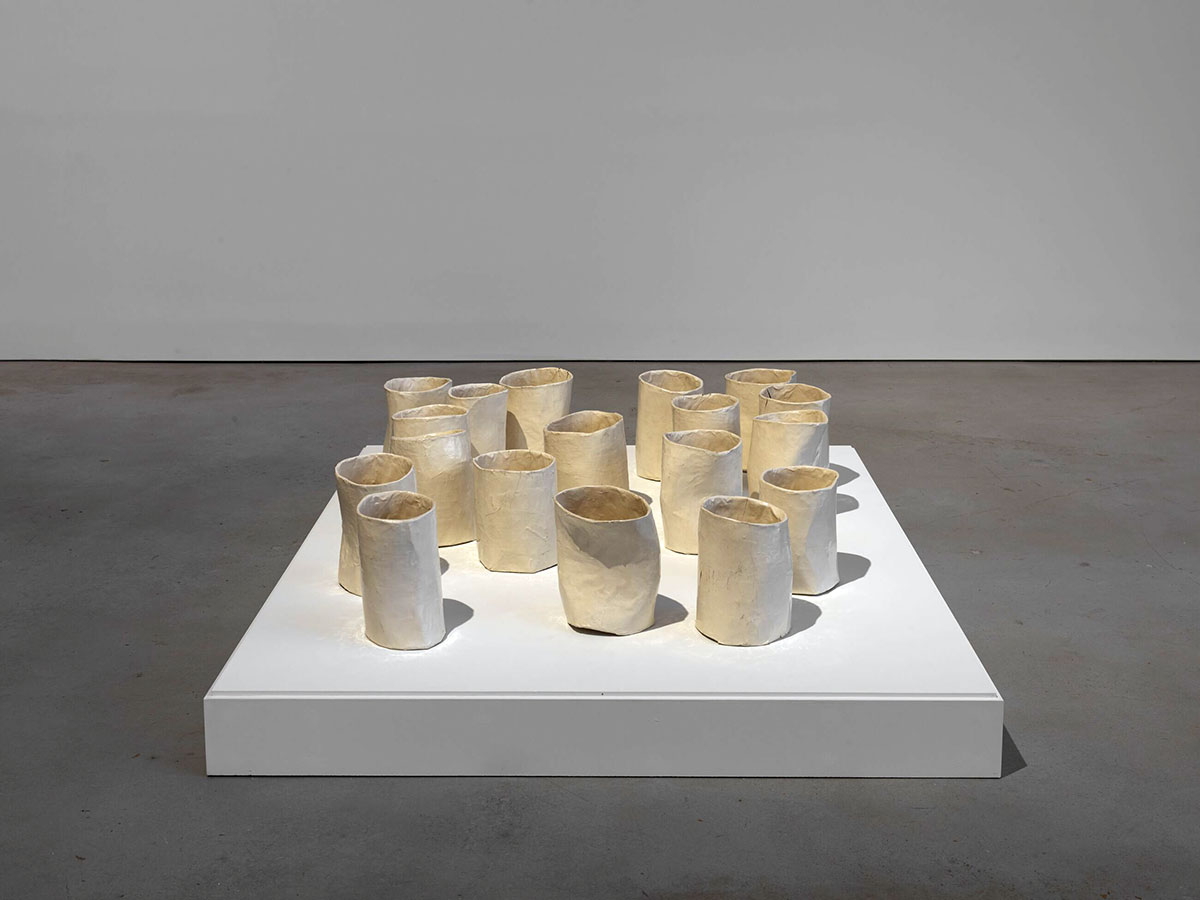PRESENTATION: Eva Hesse-Five Sculptures
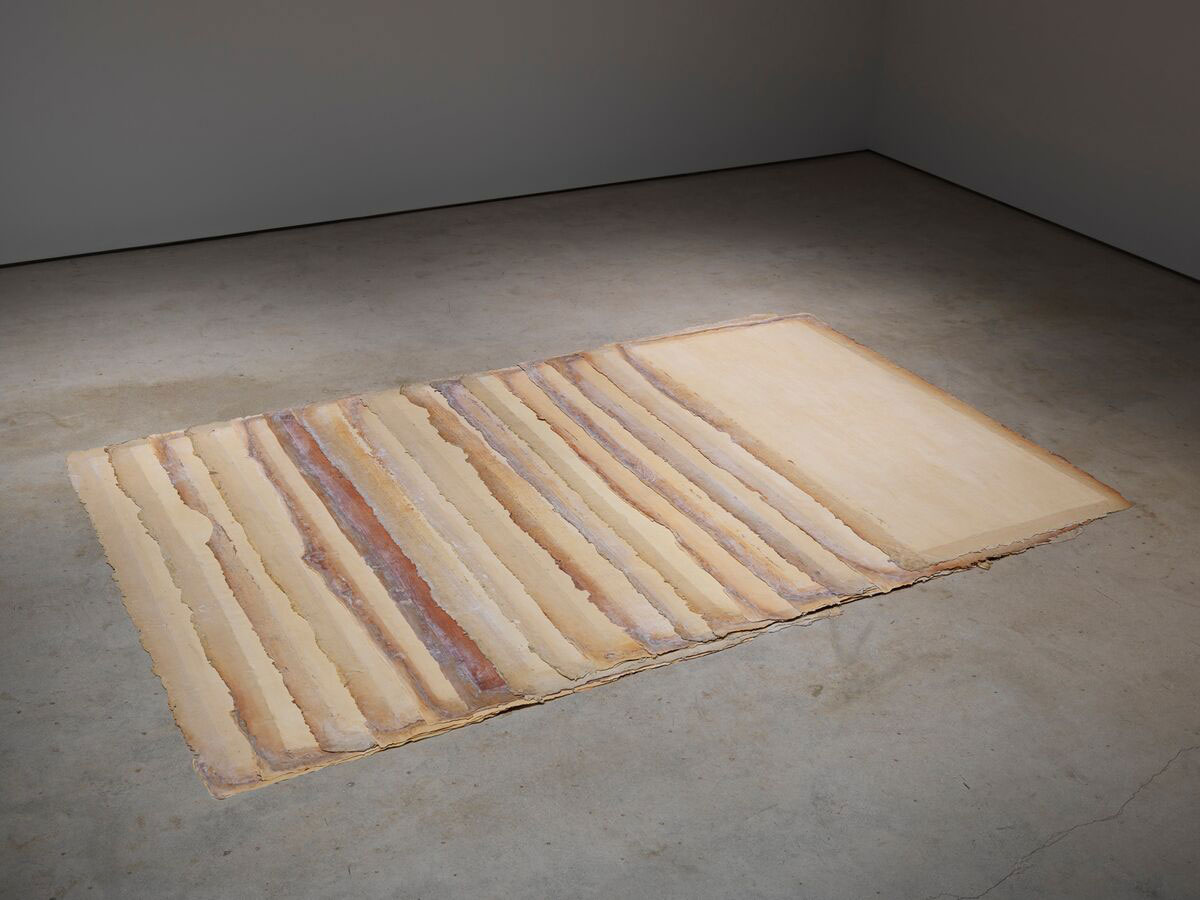 Eva Hesse is one of the icons of American art of the 1960s, her work being a major influence on subsequent generations of artists. Hesse cultivated mistakes and surprises, precariousness and enigma, to make works that could transcend literal associations. The objects she produced, at times barely present yet powerfully charismatic, came to play a central role in the transformation of contemporary art practice.
Eva Hesse is one of the icons of American art of the 1960s, her work being a major influence on subsequent generations of artists. Hesse cultivated mistakes and surprises, precariousness and enigma, to make works that could transcend literal associations. The objects she produced, at times barely present yet powerfully charismatic, came to play a central role in the transformation of contemporary art practice.
By Dimitris Lempesis
Photo: Hauser & Wirth Gallery Archive
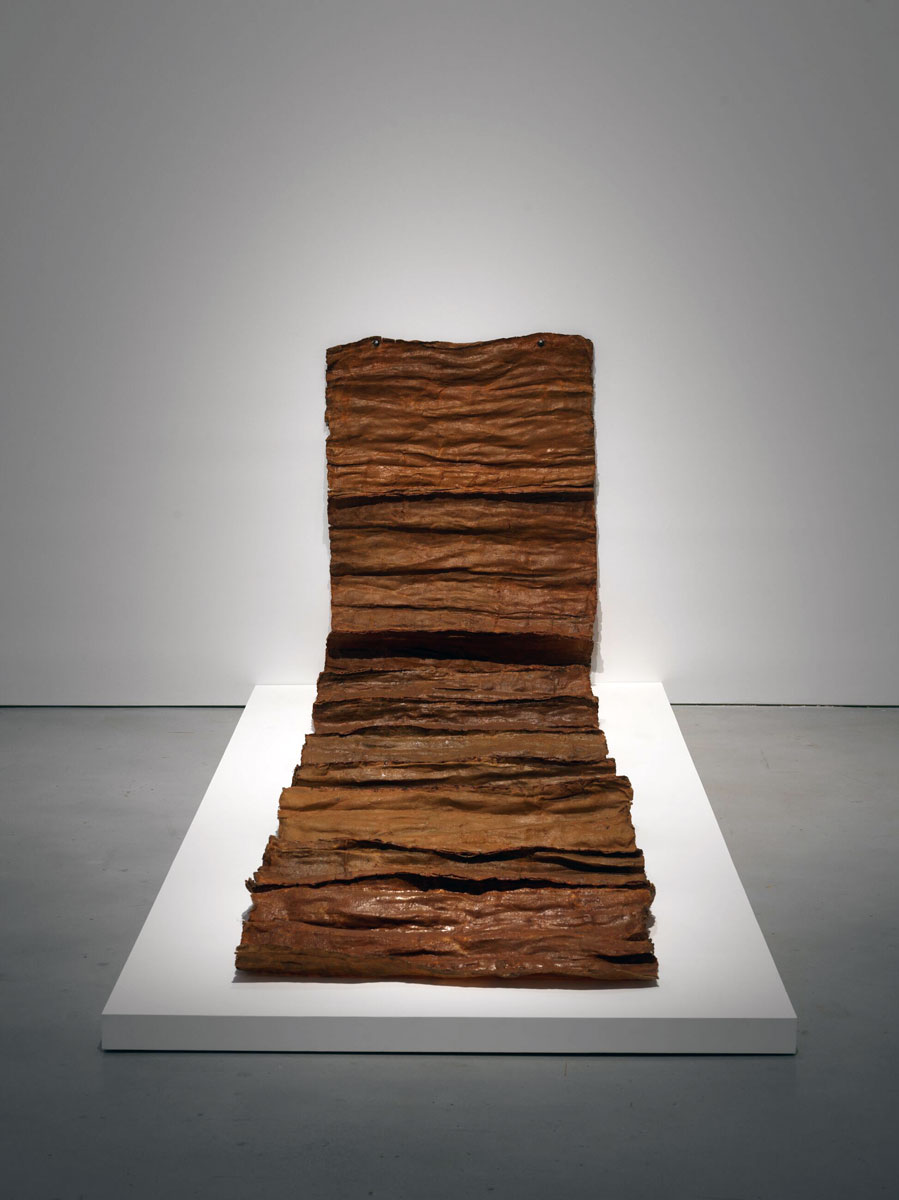
Eva Hesse transformed the language of sculpture through her pioneering use of alternative forms and materials. Challenging the hard-edged, manufactured aesthetic of the prevailing minimalist movement of her day, Hesse’s use of latex, Fiberglas and industrial plastics opened new possibilities in art. Half a century later, her groundbreaking oeuvre is as potent as it was in 1968, the year of the first and only exhibition of her sculptures held during her lifetime. That there have been some fifteen exhibitions in the decades following her death in 1970 is a testament to Hesse’s continued contemporaneity. The exhibition “Five Sculptures” reunites five of Eva Hesse’s most celebrated large-scale works, all on loan from major American museums and all made in the most intense period at the end of her life from 1967 to 1969. Unlike most of the abstract sculpture being produced at the time, Hesse’s works were abstract yet powerfully evocative of human corporality, laying bare the processes used to make them. Seriality, connection and repetition were at the heart of Hesse’s creative process and are evidenced clearly in the earliest work on view in this exhibition, “Repetition Nineteen I” (1967). On loan from The Museum of Modern Art, New York, this work is the first of three versions Hesse planned to make over a period of ten months. It is comprised of eighteen bucket-like forms, each a little over nine inches tall, and is the last piece Hesse made using papier-caché, a favored medium. Hesse originally planned a second version of “Repetition Nineteen” in sheet metal coated with Sculp-Metal, but abandoned that idea when she began to work with rubber and latex. “Repetition Nineteen I” is a key example from Hesse’s oeuvre, elucidating the artist’s emotionally suggestive use of form and space, and interest in objects that were visibly handmade and irregular. Although similar in size and shape, none of the cylindrical forms in “Repetition Nineteen I” are exactly alike, creating a destabilizing and uncanny sense of doubling. Hesse kept their arrangement open-ended, insisting that they should not have a fixed order. The result is a responsive and provisional installation whose overall shape varies with each presentation. “Area” (1968), on loan from the Wexner Center for the Arts at Ohio State University in Columbus, was created in the summer of 1968 for Lucy Lippard’s landmark traveling exhibition ‘Soft and Apparently Soft Sculpture.’ For Hesse, “Area” was important because of its underlying relationship to “Repetition Nineteen III”. The artist explained: ‘‘Area’ is made from the mold of another piece, ‘Repetition Nineteen III.’ It is the insides that we took out. And then I made it into another piece. I mean there is no connection whatsoever except if you saw it, it is very clear… I rubberized the forms, attached them and sewed them together with wire and that is the piece… I have a personal attachment because it comes from another piece. I take a piece from one piece and make it totally another one. ‘Repetition Nineteen III’ was made of empty containers and there was that sexual connotation. It is anthropomorphic. ‘Area’ isn’t, or is in a totally different way. It is used as a flat piece with a suggestive three-dimensionality…” The monumental work “Expanded Expansion” (1969), on loan from the Guggenheim Museum and made in the year before the artist’s death, embodies all of Hesse’s interests—especially her fascination with materiality, contradiction and absurdity. Hesse once described this piece as ‘opposite in form, large, looming, powerful yet precarious.’ Standing just over 10 feet tall and 30 feet wide when fully extended, ‘Expanded Expansion’ comprises thirteen panels made of fragile rubberized cheesecloth supported by rigid Fiberglas and polyester resin poles. Its height is fixed by the length of the poles, but its width could originally be manipulated to expand or contract, so, like ‘Repetition Nineteen I,’ its ultimate size is dependent on the qualities and limitations of its environment. In this work, Hesse combined some of her favorite materials, latex, Fiberglas and cheesecloth. The juxtaposition of durable Fiberglas with ephemeral latex and cheesecloth testifies to Hesse’s continued interest in paired opposites, subverting the idea of the monumental by suggesting that forms were only momentarily stable. “Expanded Expansion: was first shown in 1969 as part of the group exhibition ‘Anti-Illusion. Procedures/Materials’ at the Whitney Museum of American Art in New York. This powerful work is on view at Hauser & Wirth for the second time in 35 years after a complex and dedicated restoration process by the Solomon R. Guggenheim Museum. On loan from Glenstone Museum, “Augment comprises seventeen overlapping rectangular sheets of rubberized canvas placed on the floor. Hesse’s definition of the title in a notebook—to ‘increase, make greater’—refers to the repetition and accumulation of units. The idea of the infinitely repeatable module, found in much of Hesse’s work in 1968, is expressed in ‘Augment’ in the form of thin superimposed sheets. Created towards the end of 1968 in Hesse’s studio in New York, the work embodies the artist’s aesthetic of formal contradictions. Its composition is simple and elegant, making it her largest latex floor piece. At once solid (the central sheet of canvas) and permeable (the translucent edges of pure latex), finite in its seventeen sheets and infinite in its title and the artist’s desire for the work to contain ‘a thousand’ sheets, rough in its poured edges and smooth on its latex canvas base, the work perfectly balances many of Hesse’s preoccupations towards the end of her career. “Augment” was included in two legendary exhibitions at the end of the 1960s. It was first shown in “9 at Leo Castelli” in 1968 alongside “Aught” both works installed at Hauser & Wirth just as they were in this landmark exhibition. The following year in 1969, it was shown in “When Attitudes Become Form” curated by Harald Szeemann at the Bern Kunsthalle, an exhibition advocating for the new art that emerged in the 1960s, work grounded in an “inner attitude” elevating artistic process over final product. “Aught,” borrowed from the University of California, Berkeley Art Museum, is comprised of four parts hanging side-by-side along the wall, each the same size as the sheets in “Augment” both works installed just as they were for their public debut in the now legendary exhibition “9 at Leo Castelli” in 1968. Each of the four segments in “Aught” are comprised of two sheets of rubberized canvas that have been attached at the edges and filled with polyethylene drop cloths, creating a slightly billowing effect on the surface, provoking viewers to feel the tension in the space, literal and psychological, between painting and sculpture. Normally the polyethylene used to prevent the rubber from sticking to the floor during fabrication would have been discarded once the latex had dried. The idea of reusing a discarded element of the fabrication process is reminiscent of the creation of “Aught” made from the mold of another piece, “Repetition Nineteen III”.
Photo: Eva Hesse, Augment, 1968, Latex, canvas, Installation variable, 17 units, 198.1 x 101.6 cm / 78 x 40 in each, Glenstone Museum, Potomac, Maryland, © The Estate of Eva Hesse, Photo: Genevive Hanson
Info: Hauser & Wirth Gallery, 542 West 22nd Street New York, NY, USA, Duration: 2/5-26/7/2024, Days & Hours: Tue-Sat 10:00-18:00, www.hauserwirth.com/
